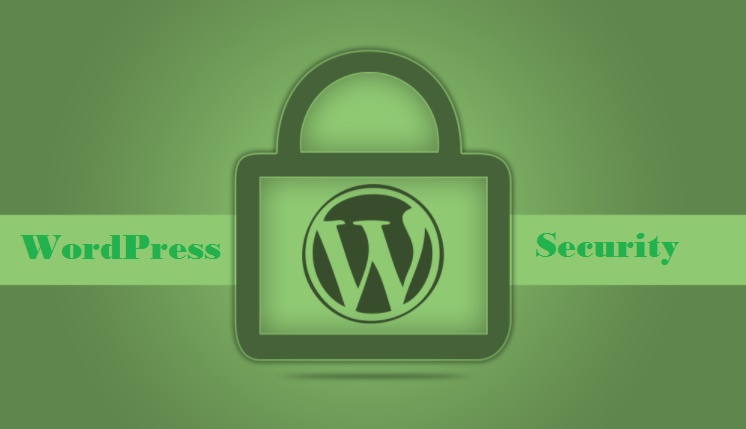WordPress is one of the most preferable platforms for website development. WordPress is an open-source CMS (Content Management System), which is inherently secure, highly customizable and very easy to configure and use. That’s the reason why 65-70% websites which are using CMS have WordPress as the backbone of their websites. The core of the WordPress is very secure and a dedicated security team is always working to mitigate any vulnerability or security flaws. So, though WordPress based sites offer better security, but as a webmaster you should take some measures as well to keep your WordPress website all proof.

Choose a reliable hosting provider:
Choosing a good and reliable hosting provider for your WordPress website is the first most important thing to begin with. Your whole website setup including all media files and contents are stacked away on a server which is managed by your hosting service provider. Whether it’s a shared hosting, VPS hosting, Managed hosting or Dedicated hosting unless you have your own data center it’s your hosting provider which is performing all root administration of the servers and managing the networks. Hence, before you opt for any hosting service provider it’s always advisable that you do some ground works and read some reviews about that company instead of believing them blindly. You may find many hosting providers offer unlimited hosting, free domains, unlimited bandwidth, etc. at a very inexpensive price, but that can put your website security at risk. Reputed web hosting services may charge you higher, but they generally assure highest quality and protection.
Make sure that your hosting provider is providing latest or at least supported version of the server Operating System, PHP, MySQL. These three things are main three pillars of your WordPress site. Having latest versions of these components will not only secure your WordPress site, but also make it faster. In shared hosting you can’t do much at OS level, so ask your hosting provider about the frequency of OS backup, protection and vulnerability patching and support. Now a days most of the reputed service providers provide cPanel with shared hosting packs. Using cPanel you can take full file system backup, database backup, cron job scheduling, set many security measures and so on. In VPS, Dedicated hosting you have control over OS to perform different administrative tasks. Learn some basics or hire a system admin to help you if needed. Tools like WHM, cPanel provide easy Graphical interface to manage most of the admin tasks. You may ask your service provider if they provide WHM or cPanel. They may charge you extra, but these tools are really helpful.
Keep WordPress up-to-date:
WordPress is an open-source CMS. It gets regular updates. From WordPress 3.7 security updates are applied automatically. But for major version releases you need to initiate the update process from the admin dashboard. Always make sure to have the latest version of WordPress to avoid vulnerabilities. Whenever a new version of WordPress is released you will see the available update notification in your WordPress admin dashboard. Simply take a backup of your database and start updating WordPress.
Install only from trusted sources:
Install WordPress themes and plugins only from trusted sources. The best way to keep your WordPress website secure and clean is to install only few required plugins. If you are not using a plugin or a theme instead of retaining them as Inactive it’s always advisable to uninstall it. Many webmasters often make a mistake of downloading premium WordPress themes from untrusted or pirated sources. These pirated copies of premium WordPress themes often contain malicious codes which may completely shatter your WordPress website and you will not even able to identify it. Always install free themes only from WordPress.Org, as most of the top theme developers submit there free WordPress theme here and they do all required checks before getting that theme available for downloading. If you wish to use any premium WordPress theme, then read the reviews first and purchase/ download it only from the actual developer/ distributor. Any unauthorized source that is distributing any paid premium theme for free may have added some malicious codes in it, so keep off it. The same thing is true for Plugins also. When you are installing a Plugin it may appear simple, but when you are installing a Plugin you are basically doing code level changes in your WordPress website. Plugins are so potent that they can add or modify WordPress functions, change permission of your hosting directories, edit .htaccess file, modify files/codes of other plugins, add infected code in your header file and so on. If you need to add any extra feature in WordPress website, check WordPress. Org and read the reviews before installing a plugin from there.
Strong Password and Security tools:
Use a secure password for your WordPress admin login and keep changing the password at regular interval. If you are using cPanel or WHM, same applies to both too. To ensure better security and to stop Brute Force attack use Two Step Authentication or 2FA login for WordPress Admin login and cPanel or WHM logins. It’s really very easy to set it up and you can use free authenticators like Google Authenticator or Microsoft Authenticator and so on.
To enforce stronger security for your website you may use any reputed security and firewall plugin like Sucuri Security, BulletProoof Security, Cloudflare, All in One WP Security and Firewall and so on.








Leave a Reply